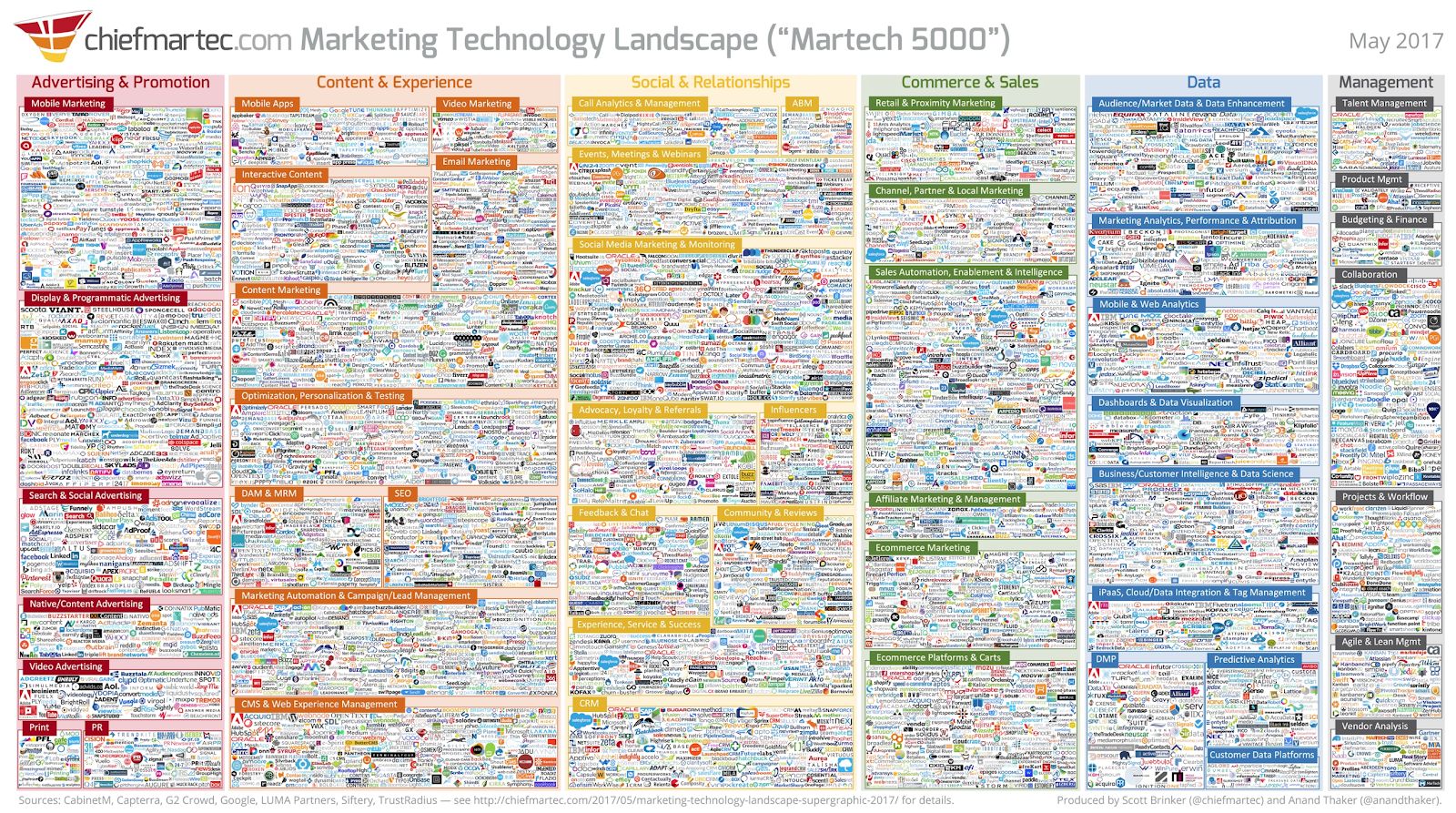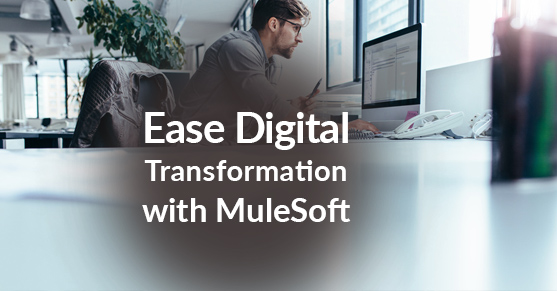Digital transformation can be easier when you use MuleSoft APIs to connect legacy technology, applications, and cloud-based solutions. But let’s back up a minute… what is digital transformation anyway?
Digital transformation is a mindset focused on maximized customer engagement and optimal business outcomes, along with a technological process to back it in today’s digital business landscape. Essentially, the goal is to move away from systems of transactions toward systems of customer engagement with personalized marketing and relationships with your brand.
Given that we are in the Internet of Things era (IoT), all kinds of devices are being used by customers and they all need to connect. That means that companies need to think differently about technology, the customer buying journey, and how to move beyond mere transactions into customer engagement through delivering value and personalizing the relationship.
A company typically needs to initiate a Digital Transformation process when:
- The competition is out-innovating the company in terms of solutions, customer experience, and digital presence in the marketplace.
- There are constraints in rolling out new features and upgrades.
- Employees are spending more time on maintaining legacy technology than on innovating solutions and supporting employee performance.
- There is a fragmented view of the customer buying journey and a disjointed brand experience.
- There are many diverse applications running that need to be integrated and maintained.
Basically, companies need to initiate a Digital Transformation process when their ability to meet customer needs is outpaced by their ability to deliver it easily, effectively, and efficiently. In some organizations, when a piece of technology is needed, some creative types will simply develop it and go around the IT team. Of course, this only makes the problem worse.
There is a plethora of martech applications available – nearly 7,000 at latest count – many of which companies need to function to gather data from which to make informed, strategic decisions for business growth.

As a result, organizations are collecting more data than ever before from applications that all need to talk to each other. Additionally, you need to leverage your legacy technology investments to extract the data being collected. The net result is that it can be complete chaos for the IT team to manage.
Challenges in Digital Transformation
Businesses are under increasing pressure to provide delightful experiences to customers, employees, and partners – in multiple channels – as well as innovate more quickly than the competition.
 Business priorities and IT investments are often misaligned, as IT continues to focus on tactical improvements and maintaining legacy infrastructure and systems while business focuses on customer engagement and innovating solutions to meet dynamic marketplace needs. Accordingly, IT leaders must enable innovation and rapid iteration of applications that access core systems of record, while also ensuring stability and control of those systems.
Business priorities and IT investments are often misaligned, as IT continues to focus on tactical improvements and maintaining legacy infrastructure and systems while business focuses on customer engagement and innovating solutions to meet dynamic marketplace needs. Accordingly, IT leaders must enable innovation and rapid iteration of applications that access core systems of record, while also ensuring stability and control of those systems.
Maybe the most significant challenge is that many organizations still don’t understand digital transformation. It’s a buzzword that often gets interpreted to mean simply digitizing company documentation; the reality is, as discussed above, that the ‘transformation’ is about delivering long-term business value to customers through a more comprehensive, integrated approach.
The good news is that, by virtue of reading this now, you know more than most people about digital transformation – so pat yourself on the back!
Digital Transformation Recommendations
So what are some things to keep in mind to facilitate digital transformation in your organization? Here are just a few:
- Accelerate innovation and solutions delivery, as well as improve agility, by empowering line-of-business users to access and use IT resources without IT intervention.
- Foster a partnership between IT and line-of-business users to ensure business priorities and IT investments align and support overall business targets.
- Use APIs to open up data and deliver reusable assets that accelerate digital transformation and revenue growth. To understand the value of APIs, 60% of eBay’s revenue, 50% of Salesforce’s revenue and 90% of Expedia’s revenue come from using APIs.
“It’s not about going paperless; it’s about the IT team enabling the whole business to innovate faster than the competition and adapt quickly to market changes.” ~ MuleSoft
Let’s talk about how APIs (Application Program Interfaces) are driving change in business…
APIs Are Driving Cultural Shifts in Business
Digital enterprise today requires speed and agility in accessing data; new technologies – like SaaS, mobile, and IoT – are increasing (exponentially) the number of endpoints that must be connected. Those technologies are also upgrading and changing frequently. APIs are the connectors between applications that facilitate data exchange. As a result, they are driving cultural shifts in how business is done as well as customer expectations of how business is done. IT is no longer a centralized function that merely troubleshoots problems; instead, IT is a key player in an open, collaborative environment that focuses on meeting company performance objectives.
Essentially, APIs introduce a new way for companies to connect, share and manage data and applications – including legacy tech investments. APIs enable companies to extract the data collected into cohesive information and actionable insights. By creating an application network using APIs, apps, data and devices become pluggable and reusable which accelerates business outcomes. By using APIs, the data from legacy tech can be harvested and effectively used in operations and decision-making.
APIs aren’t only speeding IT delivery for digital transformation; they are also driving revenue. One-third of organizations with more than 100,000 employees expect to generate $10 million or more in revenue through APIs and activities directly related to API implementation.
Line-of-business users are expected to deliver value-laden solutions and personalized customer relationships faster and more effectively than ever; as a result, businesses are turning to technologies such as cloud applications, business intelligence and analytics, and integration solutions – including APIs – that connect apps and data sources. With self-serve IT, line-of-business users can get what they need without IT being a potential bottleneck in getting it.
Altogether, APIs are a major factor in facilitating successful digital transformation from technological, strategic, and operational perspectives.
4 Ways to Know You Need APIs
Breaking it down further, in simple terms, here are four ways to know your organization would benefit by using APIs.
- You have lots of data – but no real information.
- You’re using spreadsheets – but you have LOTS of data (e.g., ‘big data’).
- It’s challenging to join or integrate data from different sources.
- The IT Department is generating reports vs. the user being able to get real-time reports the way they want them (self-service).
In other words, you need data and functionality while maximizing existing legacy tech investments – simply and easily.
Even more, if you need to roll out new features, you typically either have to depend on existing IT systems or implement a new application, which has to integrate with existing systems. APIs can help with that too.
MuleSoft is Your Digital Bridge
As you now know, you need a bridge between your legacy tech and the data it holds to ease the digital transformation process. Your goal is to use the data you’re already collecting by accessing it and getting it into a form where it can yield actionable insights. MuleSoft can do that for you.
MuleSoft is a digital bridge – that connects your applications and data exchanges so they talk to each other. It allows developers to connect applications together quickly and easily, enabling them to exchange data using API-led connectivity, and loose coupling of enterprise applications or systems.
XTIVIA has long been a MuleSoft integration partner, with our developers having over 50+ MuleSoft certifications between them and 20+ years of experience put to use in 300+ engagements with more than 45 enterprise-level clients. We can help you make it easy to use MuleSoft in your organization.
The bottom line is that MuleSoft can facilitate your process of digital transformation, leverage your legacy technology and get the most value from your data.
A quick caveat in summary: it’s not enough for CIOs to put MuleSoft in place and think digital transformation is handled – that’s only one piece of it. The bigger message is that the CIOs must teach IT, teams, what digital transformation really means and provide guidance on how to align IT strategies and investments with business goals and priorities.
So choose MuleSoft and XTIVIA’s team of experts to help facilitate data exchanges in your organization. Then make sure to have conversations around delivering greater customer value, innovating solutions, and aligning all aspects of your organization toward achieving business targets – that’s digital transformation in action.
Want more information about MuleSoft and how our experts can help you? Contact us today or find out more information about MuleSoft.


